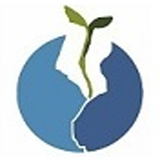
ABSTRACT
Background:
South Africa has made substantial progress on child and maternal mortality, yet many avoidable deaths of mothers and children still occur. This analysis identifies priority interventions to be scaled up nationally and projects the potential maternal and child lives saved.
Design:
We modelled the impact of maternal, newborn and child interventions using the Lives Saved Tools Projections to 2015 and used realistic coverage increases based on expert opinion considering recent policy change, financial and resource inputs, and observed coverage change. A scenario analysis was undertaken to test the impact of increasing intervention coverage to 95%.
Results:
By 2015, with realistic coverage, the maternal mortality ratio (MMR) can reduce to 153 deaths per 100,000 and child mortality to 34 deaths per 1,000 live births. Fifteen interventions, including labour and delivery management, early HIV treatment in pregnancy, prevention of mother-to-child transmission and handwashing with soap, will save an additional 9,000 newborns and children and 1,000 mothers annually. An additional US$370 million (US$7 per capita) will be required annually to scale up these interventions. When intervention coverage is increased to 95%, breastfeeding promotion becomes the top intervention, the MMR reduces to 116 and the child mortality ratio to 23.
Conclusions:
The 15 interventions identified were adopted by the National Department of Health, and the Health Minister launched a campaign to encourage Provincial Health Departments to scale up coverage. It is hoped that by focusing on implementing these 15 interventions at high quality, South Africa will reach Millennium Development Goal (MDG) 4 soon after 2015 and MDG 5 several years later. Focus on HIV and TB during early antenatal care is essential. Strategic gains could be realised by targeting vulnerable populations and districts with the worst health outcomes. The analysis demonstrates the usefulness of priority setting tools and the potential for evidence-based decision making in the health sector. Keywords: child health; maternal health; cost and cost analysis
Responsible Editor: Stig Wall, Umeå University, Sweden.